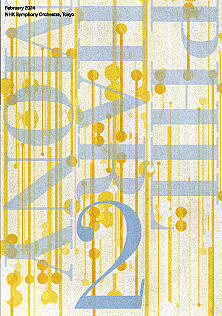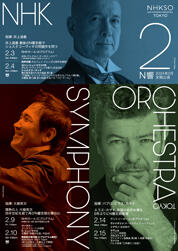- Home
- Concerts
- Subscription Concerts 2023-2024
- Program B
- No. 2006 Subscription (Program B)
No. 2006 Subscription (Program B)
Suntory Hall
Google Map Seating Chart
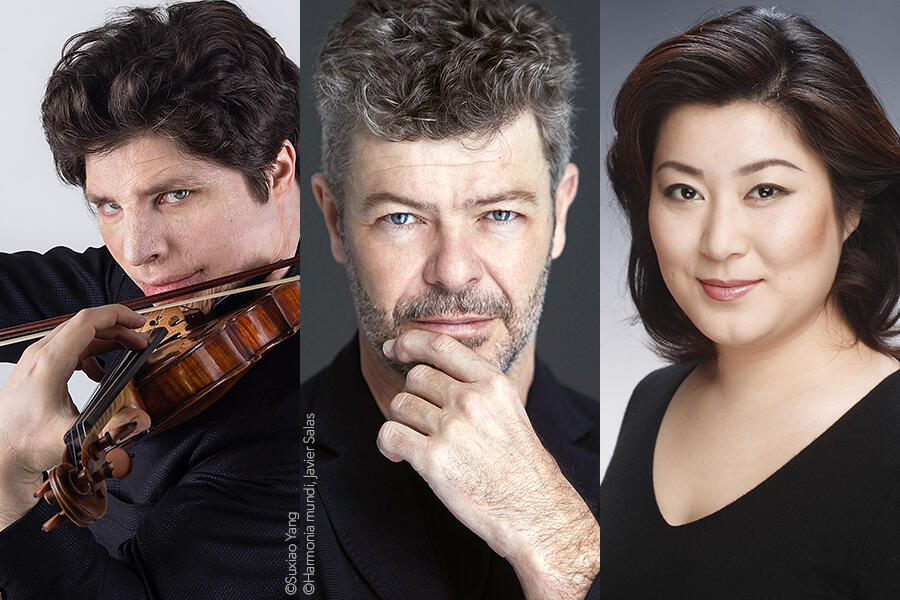
Program
Ravel / Rapsodie espagnole (Spanish Rhapsody)
Spain fascinated French composers of the 19th and 20th centuries, whether they had visited there – like Saint-Saëns (Andalusian Caprice, 1904) and Chabrier (Spain, 1883) – or they used their imagination – like Bizet (Carmen, 1875) and Debussy (Evening in Granada from Estampes, 1903 and Iberia from Images for Orchestra, 1908) –. An exceptional case is Ravel, as he, born in a French Basque town close to the Spanish border, grew up listening to Spanish folk songs crooned by his Basque mother. Having once lived in Madrid, she was reportedly a fluent Spanish speaker. Proud of this cultural heritage, Ravel wrote some Spain-inspired masterworks including L’heure espagnole (Spanish Time) (1907) and Boléro (1928).
Spanish Rhapsody is Ravel’s very first orchestral piece put into print. The origin of this four-movement music was Habanera which was initially penned for two pianos in 1895. The French composer then wrote three more for the same formation in the early 1900s before orchestrating all four. Spanish Rhapsody was thus revealed in 1908 in Paris and made his polished scoring abilities widely known.
Because of the above-mentioned genesis, III Habanera is the only movement which doesn’t share the descending theme (F/E/D/C-sharp). This “cyclic” theme is constantly repeated during I Prélude à la nuit (Prelude to the Night) and ends II Malagueña in an impressive manner (malagueña is a flamenco dance from Málaga in Andalusia). The four-note melody reappears in IV Feria (Festival), a colorful and high-spirited music landscape.
[Kumiko Nishi]
Prokofiev / Violin Concerto No. 2 G Minor Op. 63
Prokofiev left us two violin concertos contrasting in style. No. 2 was first performed in Madrid by the French violinist Robert Soetens and the Spanish conductor Enrique Fernández Arbós leading the Madrid Symphony Orchestra in December 1935. Those who are familiar with Prokofiev’s radical modernism from his early years could be tricked by the work’s comparatively conservative writing and classical construction with three rapid-slow-rapid movements. The historical background explains this, as it was penned around the time Prokofiev settled for good in his homeland – then the USSR – following an eighteen-year stint overseas. No. 2, along with the ballet Romeo and Juliet, is from Prokofiev’s transition to a more lyrical, melodious and conventionally tonal style of his Soviet era.
The concerto was a commission from fans of Soetens with whom Prokofiev as pianist was just touring in Europe. The first sonata movement in G minor begins with the violin’s monologue giving the Russian-folky five-beat theme against the background of 4/4 time. The slow middle movement in E-flat major gives also a metrical twist with the mellifluous principal theme alternating 12/8 and 4/4 time introduced by the violin solo at the outset. The lively finale in free rondo-like form (A–B–A–C–A–B–A–coda) in B-flat major / G major sounds Hispanic at times as if to regale the first audience in Spain with a local hue: the section A returns three times accompanied by castanets clacking.
[Kumiko Nishi]
Falla / El sombrero de tres picos, ballet (complete) (The Three-Cornered Hat)*
Isaac Albéniz (1860–1909), Enrique Granados (1867–1916) and Falla – the three Spaniards who lived a page of their life in France are eloquent testimony to the intimate relations between the French and Spanish music worlds at the turn of the century. Born in Cádiz, Falla was trained in Madrid by the Catalan composer Felipe Pedrell (1841–1922) known as the father of the Spanish national school of music. From 1907 to 1914, Falla stayed in Paris where he met Ravel, Debussy, Stravinsky and the Russian impresario Sergei Diaghilev. The outbreak of World War made Falla return home to continue to compose in Madrid.
El sombrero de tres picos (The Three-Cornered Hat) is from the second Madrilenian period of the now-well-traveled Falla. Based on an Andalusian folk tale, it was originally a pantomime entitled El Corregidor y La Molinera (The Magistrate and the Miller’s Wife) (1917) with music by Falla. He, encouraged by Diaghilev, made from it the fully-fledged ballet score: El sombrero de tres picos was first staged in London in 1919 by Léonide Massine and Ballets Russes, Diaghilev’s dance company, with the set and costume by Pablo Picasso.
The introduction opens with shouts of “Ole!”, castanets clacking and the singer warning “Young bride, lock your door securely!” Set in an Andalusian town, the two-act ballet features the Magistrate wearing a “three-cornered hat”, the symbol of power, the Miller and his beautiful Wife. A highlight of the first act is a seductive fandango, a Spanish folk dance. The Miller’s Wife dances it to make fun of the Magistrate who visits the mill to court her. She and her husband succeed in sending the womanizer away. The second act starts with neighbors dancing a seguidilla followed by the Miller dancing a farruca, both are Spanish folk dances. The festiveness is interrupted by the sudden arrest of the Miller – the dramatic opening of Beethoven’s Fifth Symphony is heard – which is plotted by the Magistrate who attempts to sleep with the Miller’s Wife. The trouble comes to a boisterous happy ending for the Miller couple dancing with their neighbors a jota, a rhythmical dance originally from Aragon, Spain.
[Kumiko Nishi]
[Encore]
Carlos Gardel (arranged by Augustine Hadelich) / Por una cabeza
violin: Augustine Hadelich
Artists
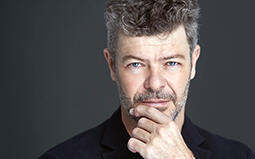 ConductorPablo Heras-Casado
ConductorPablo Heras-Casado
Pablo Heras-Casado was born in Spain in 1977. He visited Japan in 2009 as one of the conductors of Stuckhausen’s Gruppen for three orchestras at Suntory Summer Festival, which was his first collaboration with the NHK Symphony Orchestra, and in 2011, he gave the world premiere performance to Toshio Hosokawa’s opera Matsukaze at the Théâtre de la Monnaie. In that sense, he was initially received in Japan as a conductor specialized in contemporary works, however he has continued to develop an extensive repertoire ranging from works of the Romantic period to large orchestral works and operas. He has guest-conducted the world’s leading orchestras such as the Berliner Philharmoniker and the Wiener Philharmoniker, while often working with early music ensembles such as the Freiburger Barockorchester, and has a deep knowledge of this genre. He frequently appears with prestigious opera houses including Teatro Real, Madrid, where he is Principal Guest Conductor, La Scala, Milan, and the Wiener Staatsoper, and in the summer of 2023, he made his debut at the Bayreuther Festspiele conducting Parsifal. Thus he is showing an outstanding presence in the classical music scene.
He pays careful attention to details to create precise sounds, and at the same time, he produces lively music which resonates well, drawing clear and fresh sounds from orchestras. In recent years, the opportunities to work with the NHK Symphony Orchestra have become more frequent, and he has exhibited his wide range of knowledge and interpretations through a varied selection of repertoire. On this visit, he has selected a grand work by Falla, a composer of his native country, as the main work, combined with works such as Ravel’s Spanish Rhapsody, a program which can show his true potential.
[Mitsunori Eto, music critic]
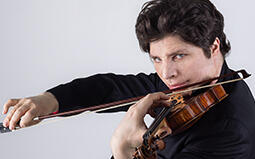 ViolinAugustin Hadelich
ViolinAugustin Hadelich
Augustin Hadelich was born in 1984 to German parents in Italy, and studied at Mascagni Academy and Juilliard School. Despite an unfortunate incident that left him with severe burns affecting 60% of his body in 1999, he overcame more than twenty surgeries and rehabilitation, with his unyielding mentality. In 2006, he won the International Violin Competition of Indianapolis, and furthermore, he was highly praised for his debut performance at Carnegie Hall in 2008. Since then, he has worked with such renowned conductors as Andris Nelsons, Herbert Blomstedt and Neville Marriner, and with the world’s leading orchestras such as the Royal Concertgebouw Orchestra, the Symphonieorchester des Bayerischen Rundfunks, the Münchner Philharmoniker, the Boston Symphony Orchestra, the Cleveland Orchestra and the Chicago Symphony Orchestra as well as in many music festivals including the BBC Proms. He has a huge discography, and won Grammy Award for Best Classical Instrumental Solo in 2016. This is his first appearance in the NHK Symphony Orchestra subscription concert. He will perform Prokofiev’s Violin Concerto No. 2, the work he recorded in 2021 in a delicate and brilliant way, so our expectations are naturally very high.
[Katsuhiko Shibata, music critic]
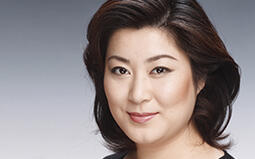 SopranoTamayo Yoshida*
SopranoTamayo Yoshida*
Tamayo Yoshida graduated from Aichi University of the Arts, its post-graduate course, and completed the New National Theatre’s Opera Studio. She went to Bologna, Italy in 2006 to study on scholarship by the Japan’s Agency for Cultural Affairs and also studied in Munich and Vienna from 2008 to 2010 by receiving a special grant from the Rohm Music Foundation. In 2010, she made her European debut by singing the role of Donna Anna in Don Giovanni at the Musikfestival Steyr and in 2012, she sang the title role of Madama Butterfly on a short notice at the Seiji Ozawa Music Academy and won critical acclaim. Since then, she has worked with the world’s renowned conductors, including Zubin Mehta in 2016, singing in Beethoven 9th Symphony to mark the Suntory Hall’s 30th anniversary with the Wiener Philharmoniker. She was a soloist for Beethoven’s 9th Symphony staged at the Vienna Musikverein in 2017 while has appeared on many stages, including Seiji Ozawa Matsumoto Festival as well as at the New National Theatre, Nissay Theatre and PMF Sapporo. She received the highest prize at the 6th Mt. Fuji International Opera Competition of Shizuoka, the Tamaki Miura Award, and the 12th Hiroyuki Iwaki Music Award. She is a member of Nikikai.
Her singing voice with her deep tone and rich musicality has been highly evaluated across the world, therefore her flamenco-style singing in The Three-cornered Hat in her first collaboration with the NHK Symphony Orchestra will be highly focused on.
[Katsuhiko Shibata, music critic]
Download
Ticket
Program B
No. 2006 Subscription (Program B)
Suntory Hall
Google Map
Seating Chart
Single Tickets Release Date
Pre-sales for Subscribers:Thursday, October 26, 2023
*about subscribers
Sale to General Public:Sunday, October 29, 2023
Price
| S | A | B | C | D | |
|---|---|---|---|---|---|
| Ordinary Ticket | 9,800 | 8,400 | 6,700 | 5,400 | 4,400 |
| Youth Ticket | 4,500 | 4,000 | 3,300 | 2,500 | 1,800 |
Seating chart Enlarge Print PDF
*tax included
*Subscribers receive a 10% discount (Available at NHKSO WEB Ticket and N-Kyo Guide)
*For wheelchair-accessible seats, please refer to the N-Kyo Guide
Youth Tickets
Youth Tickets are great options for those of 25 years old and younger
Subscription tickets
Release Date
ANNUAL SUBSCRIPTION TICKETS
Mon., July 17, 2023 10:00am
[For Subscribers: Sun., July 9, 2023 10:00am]
SEASONAL SUBSCRIPTION TICKETS (WINTER)
Tue., Oct. 17, 2023 10:00am
[For Subscribers: Thu., Oct. 12, 2023 10:00am]
Where to buy
NHKSO WEB Ticket | Wednesday, February 14 (In English / Seats not selectable)
NHKSO WEB Ticket | Thursday, February 15 (In English / Seats not selectable)
NHKSO WEB Ticket (In Japanese only / Seats selectable)
N-Kyo Guide (Purchase by telephone only)
*Repertoire, conductor, soloists and program order are subject to change without notice.
*Pre-school children are not allowed in the concert hall

